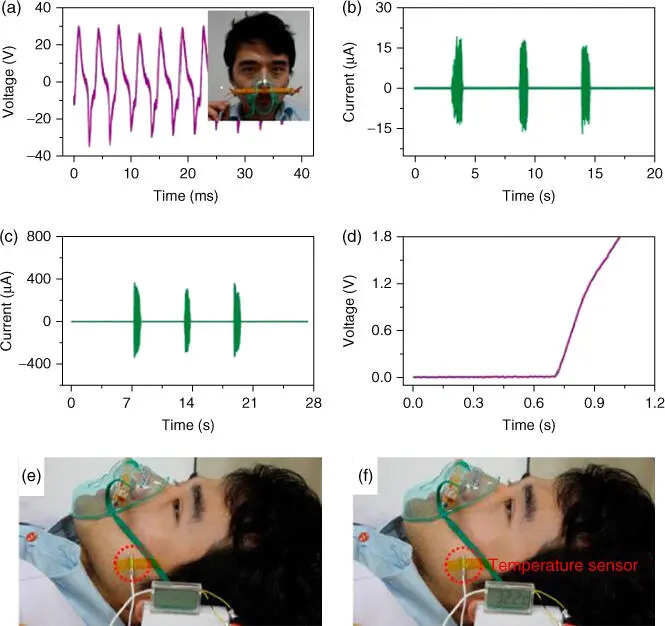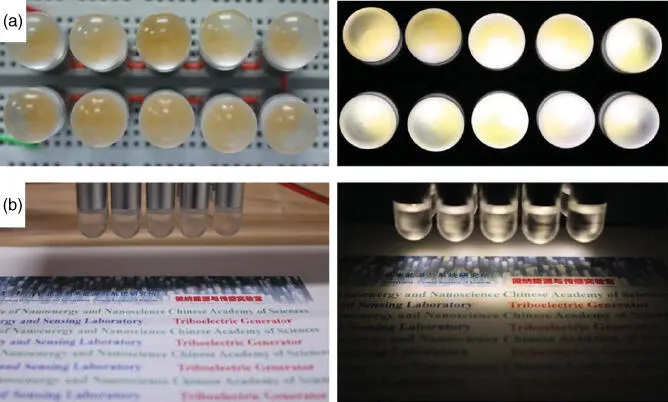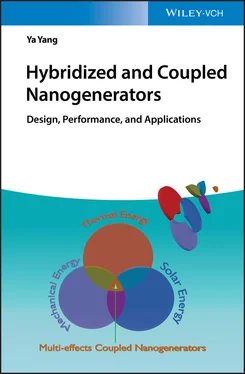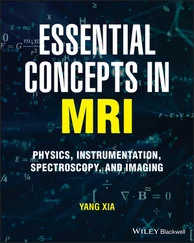Ya Yang - Hybridized and Coupled Nanogenerators
Здесь есть возможность читать онлайн «Ya Yang - Hybridized and Coupled Nanogenerators» — ознакомительный отрывок электронной книги совершенно бесплатно, а после прочтения отрывка купить полную версию. В некоторых случаях можно слушать аудио, скачать через торрент в формате fb2 и присутствует краткое содержание. Жанр: unrecognised, на английском языке. Описание произведения, (предисловие) а так же отзывы посетителей доступны на портале библиотеки ЛибКат.
- Название:Hybridized and Coupled Nanogenerators
- Автор:
- Жанр:
- Год:неизвестен
- ISBN:нет данных
- Рейтинг книги:3 / 5. Голосов: 1
-
Избранное:Добавить в избранное
- Отзывы:
-
Ваша оценка:
- 60
- 1
- 2
- 3
- 4
- 5
Hybridized and Coupled Nanogenerators: краткое содержание, описание и аннотация
Предлагаем к чтению аннотацию, описание, краткое содержание или предисловие (зависит от того, что написал сам автор книги «Hybridized and Coupled Nanogenerators»). Если вы не нашли необходимую информацию о книге — напишите в комментариях, мы постараемся отыскать её.
Hybridized and Coupled Nanogenerators — читать онлайн ознакомительный отрывок
Ниже представлен текст книги, разбитый по страницам. Система сохранения места последней прочитанной страницы, позволяет с удобством читать онлайн бесплатно книгу «Hybridized and Coupled Nanogenerators», без необходимости каждый раз заново искать на чём Вы остановились. Поставьте закладку, и сможете в любой момент перейти на страницу, на которой закончили чтение.
Интервал:
Закладка:
Source: Reproduced with permission from Liu et al. [75]. Copyright 2018, Elsevier.
Jiang et al. fabricated a smart WD‐TENG, which can be used to power some wearable electronics by harvesting various human motorial energies [67–69]. By dexterous designs, the TENGs can be used as self‐powered devices to monitor different human movements. Figure 2.17a shows that the TENG can be integrated into a shoe. The human motion state under the feet could be realized by measuring the output voltages under different leg movements, which respectively correspond to walking, jogging, and running. In addition, the electric energy generated by the device can power three light‐emitting diodes, as shown in Figure 2.17b. On the other hand, the wind‐driven TENG can also be processed into a self‐powered bracelet device. The mechanical energy of arm swing could be transformed to electric energy by the TENG. By measuring the output voltages, different arm movements can be monitored. Wang et al. fabricated a self‐powered healthcare monitoring device based on wind‐driven TENG [34]. This device can monitor human nose breath, as shown in Figure 2.18a. Figure 2.18b shows that the TENG can convert the flow from human breath to electrical energy, achieving an output voltage peak of about 30 V. By the up‐flow chip, the output current of the TENG can be increased to about 350 μA, as shown in Figure 2.18c. The electrical energy generated by the TENG can be used to charge a capacitor, as illustrated in Figure 2.18d. Figure 2.18e,f shows that the temperature sensor can be powered by harvesting human nose blown air flow via the TENG.

Figure 2.17Wind‐driven wearable electronics. (a) TENG‐based shoe for monitoring leg movements.
Source: Reproduced with permission from Jiang et al. [67]. Copyright 2018, American Chemical Society.
(b) The electrical energy form the device can power LEDs. (c) The wind‐driven TENG‐based band for monitoring hand movements.
Source: Reproduced with permission from Jiang et al. [69]. Copyright 2017, American Chemical Society.
2.3.4.5 Others
WD‐TENGs, which possess the advantages of small scale, low cost, and easy fabrication, can be used as facile power sources to uninterruptedly power some small electronic devices under continuous wind flow. Yang et al. developed a small‐scale wind‐driven TENG, which can be used to power three light‐emitting diodes and an exit sign by harvesting human mouth blowing induced wind energy, as shown in Figure 2.19a,b [32].

Figure 2.18The self‐powered healthcare monitoring system. (a) Output voltage signals of the TENG. (b) Output current signals of the TENG. (c) Output current signals after using the up‐flow chip. (d) Measured voltage of a capacitor charged by scavenging human nose breathing via the TENG. (e) Photographs before human breath. (f) Photographs of the temperature sensor after using the TENG to scavenge human breath induced air‐flow energy.
Source: Reproduced with permission from Wang et al. [34]. Copyright 2015, American Chemical Society.

Figure 2.19The wind‐driven electronics light‐emitting diodes. (a) Photographs of lighting light‐emitting diodes via the TENG. (b) Photographs of powering an exit sign via the TENG.
Source: Reproduced with permission from Yang et al. [32]. Copyright 2013, American Chemical Society.
Wang et al. reported a TEG that can harvest flow‐driven mechanical energy to achieve sufficient illumination for reading [33]. As illustrated in Figure 2.20a, 10 light bulbs could be lit up by using TEGs. Figure 2.20b shows that the illumination powered by the TEGs can be used to read printed text in the dark environment. Humidity sensors are very important for food quality inspection and equipment security. Conventional humidity sensors, which are based on metal oxides, porous silicon, and polymers, would attain saturation at high humidity. Environmental humidity can affect the output performance of TENGs. The output voltage decreased with increasing the relative humidity. According to this property, Guo et al. developed a novel humidity sensor based on the airflow‐induced TENG [63]. This sensor can work in a wide humidity range and exhibits several advantages, such as self‐power, multifunction, low cost, and high sensitivity.

Figure 2.20Photograph of lighting equipment power by the TEGs. (a) Ten spot lights driven by the TENGs. (b) Photograph of the printed text illuminated by the lights in the dark environment.
Source: Reproduced with permission from Wang et al. [33]. Copyright 2015, John Wiley and Sons.
With population growth and industrial development, air pollution has developed into a main problem that threatens human endurance. Currently, air‐purifying methods mainly include filtration, pulsed electron beam, and electrostatic precipitation. These approaches all face respective problems, such as occlusion for filtration and high voltage requirement for electrostatic precipitation. Chen et al. developed a self‐powered clearing system, which consists of a rotating TENG, an electric tank, and tow metal electrodes [76]. This nanogenerator can harvest wind energy and generate an output voltage of about 300 V. The voltage could not generate by‐products such as ozone and NO Xcompared to that in traditional electrostatic precipitation. The generated voltage signals were converted into DC electricity through a rectifying bridge, and then connected to two metal electrodes. In this system, SO 2could be converted to H 2SO 4by the electrochemical reaction. Hydrogen (H 2), which mainly comes from natural gas and water reduction, is one of desired energy sources because of its high energy capacity. Water splitting where water is converted to H 2and O 2needs an external power supply, which makes it economically inefficient. Ren et al. developed a self‐powered water splitting system, which can harvest energy from our living environment for electrolytic water splitting based on a coaxial rotatory freestanding TENG [38]. The hydrogen generation rate of this system is about 6.9685 μl/min in 1 M KOH under a wind speed of about 10 m/s.
With the development of the industrial internet, wireless sensors, which can be used to apperceive the change in the surrounding environment, have attracted increasing attention in the past decade. Usually, powering wireless sensors needs an external power source such as a Li‐ion battery, which is limited by the capacity of batteries. Electrical energy generated by harvesting wind energy via TEGs can be used in the wireless sensor, according to Wang et al. The output voltage signals generated by the TEG must be reduced to reasonable voltage value, which can be accomplished by the power management circuit, as illustrated in Figure 2.21a [33]. The output voltage signals were decreased to about 12 V, and the current signals were increased to about 0.9 mA, as shown in Figure 2.21b,c. The wireless system consists of a power management circuit, a wireless sensor node, and the TEGs in a transparent gas tube, as shown in Figure 2.21d. The output voltage value could be adjusted to 1.8 V via the power management circuit when the TEG continuity harvest wind energy is about 4.9 S, as shown in Figure 2.21e.
Читать дальшеИнтервал:
Закладка:
Похожие книги на «Hybridized and Coupled Nanogenerators»
Представляем Вашему вниманию похожие книги на «Hybridized and Coupled Nanogenerators» списком для выбора. Мы отобрали схожую по названию и смыслу литературу в надежде предоставить читателям больше вариантов отыскать новые, интересные, ещё непрочитанные произведения.
Обсуждение, отзывы о книге «Hybridized and Coupled Nanogenerators» и просто собственные мнения читателей. Оставьте ваши комментарии, напишите, что Вы думаете о произведении, его смысле или главных героях. Укажите что конкретно понравилось, а что нет, и почему Вы так считаете.












